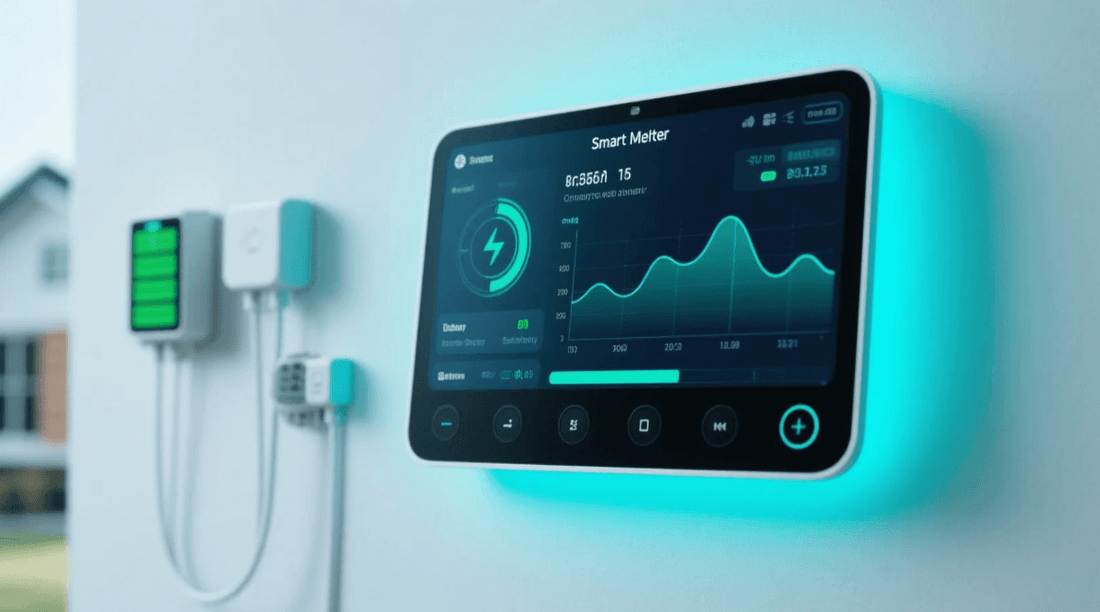
What Is a Smart Energy Monitor: A Complete Guide
Share
Introduction
In today’s connected homes, understanding What is a smart energy monitor is essential for anyone aiming to reduce bills and lower carbon footprints. A smart energy monitor provides real-time visibility into electricity usage, enabling homeowners to make data-driven decisions. By tracking consumption at the circuit or appliance level, these devices transform vague meter readings into clear insights, empowering users to optimize efficiency, comfort, and sustainability.

Defining What Is a Smart Energy Monitor
A smart energy monitor is a device that measures electrical parameters—such as voltage, current, and power factor—and communicates this data to a dashboard or app. Unlike traditional meters, it offers granular insights by circuit, appliance, or time slice. Consequently, energy usage patterns are revealed, and inefficiencies can be targeted effectively.
Core Components and Architecture
Sensing Modules
Current transformers (CT clamps) or Hall-effect sensors are typically used to detect current flow. Voltage measurements are captured via potential transformers or resistor dividers. Together, these sensors feed raw data into a central module.
Communication Interfaces
Data is transmitted over Wi-Fi, Zigbee, Z-Wave, or Ethernet. Selection depends on range, throughput, and power constraints. For instance, mesh protocols (Zigbee) are favored for extending coverage without high power draw.
Processing and Storage
On-board microcontrollers or edge-compute units aggregate sensor readings. Some processing—such as anomaly detection—is performed locally, while historical data is off-loaded to cloud servers for long-term analysis.
User Interfaces
Mobile apps and web portals display interactive charts, alerts, and recommendations. Users can drill down by device or timeframe, set thresholds, and receive notifications when unusual patterns are detected.

How It Works
Measurement: CT clamps are installed around incoming mains or sub-circuits.
Data Acquisition: Analog signals are sampled at high frequency (e.g., 1 kHz).
Signal Conditioning: Filters and calibrations ensure accuracy within ±1–2%.
Transmission: Digitized readings are sent to a gateway via the chosen protocol.
Visualization: Dashboards update in real time, displaying watts, kilowatt-hours, and cost estimates.
Key Benefits
Cost Savings: Real-time feedback encourages behavior change—such as shifting laundry to off-peak hours—yielding up to 15–20% bill reduction.
Energy Awareness: Visibility into phantom loads (e.g., standby devices) drives targeted unplugging or upgrades.
Preventive Maintenance: Sudden consumption spikes can flag failing motors or aging appliances before failure occurs.
Environmental Impact: Reduced electricity waste lowers household carbon emissions.
Demand Response: Participation in utility programs becomes seamless when automated load shedding is supported.

Applications in Smart Homes
HVAC Optimization: Integration with smart thermostats allows temperature setpoints to adapt based on usage patterns and real-time rates.
Lighting Control: Automated dimmers and smart plugs respond to peak-use alerts, dimming or disabling non-critical circuits.
EV Charging Management: Electric vehicle chargers are scheduled when rates are lowest or solar production is highest.
Renewables Monitoring: Solar inverter output and home consumption are correlated to maximize self-consumption and manage battery charging.
Installation and Setup
Pre-Assessment: Evaluate panel layout and identify feed points.
Hardware Mounting: CT clamps are affixed around conductors; the gateway is placed within network range.
Wiring and Safety: All work must comply with local electrical codes and ideally be performed by a certified electrician.
Network Configuration: Secure the device on the home network, employing WPA2 or equivalent encryption.
Calibration: Factory calibration certificates are verified, and field adjustment is performed against a reference meter.
Data Analytics and Visualization
Real-Time Monitoring
Live dashboards refresh every second, showing instantaneous load in watts and rolling cost estimates.
Historical Trends
Consumption is charted daily, weekly, and monthly. Seasonal patterns emerge, guiding HVAC insulation improvements or appliance replacements.
Anomaly Detection
Machine-learning models are trained on baseline usage. When deviations exceed thresholds, alerts are pushed via email, SMS, or in-app notifications.
Predictive Recommendations
Based on historical data and weather forecasts, the system suggests pre-cooling during upcoming heat waves or charging batteries before evening rates spike.
Integration with Home Automation
IFTTT and SmartThings: Custom rules—such as “turn off non-essential lights when consumption >2 kW”—are easily created.
Voice Assistants: Alexa or Google Assistant can report “current energy usage” or “most consuming device” on demand.
Scene Coordination: Night-time scene dims lights and powers down entertainment systems to meet energy-saving goals.
Security and Privacy Considerations
Because usage data can reveal occupancy and habits, end-to-end encryption is essential. Devices should support over-the-air (OTA) firmware updates to patch vulnerabilities promptly. For privacy-conscious users, local-only solutions avoid cloud storage entirely.
Cost and Return on Investment
Upfront Costs: Range from $100 for plug-in units to $500–$1,000 for whole-home systems.
Savings: Energy reductions of 10–20% translate to payback periods of 1–3 years, depending on local rates and usage patterns.
Incentives: Many utilities offer rebates or tax credits for installing energy management devices.
Common Challenges and Solutions
Network Interference: Mesh repeaters or wired backhauls can mitigate wireless dropouts.
Data Overload: Tiered dashboards start with simple metrics; advanced users can dive deeper.
Installation Complexity: Pre-configured kits and professional installation options simplify deployment.
Future Trends
Edge AI: More analytics will be done on-device, reducing cloud dependency and latency.
Blockchain Energy Trading: Peer-to-peer solar exports could be managed via smart contracts.
Enhanced Granularity: Appliance-level load disaggregation will improve without additional hardware.
FAQ
Q1: Can a smart energy monitor work without internet?
Yes—local dashboards and edge analytics can run offline, though cloud features are disabled.
Q2: Are all smart meters considered energy monitors?
No—utility smart meters measure whole-home usage for billing. Home energy monitors offer appliance- or circuit-level insights.
Q3: How accurate are smart energy monitors?
High-quality units achieve accuracy within ±1–2%; calibration certificates should be provided.
Q4: Do they require monthly fees?
Basic monitoring is often free; premium analytics or cloud storage may incur subscriptions.
Q5: Is data shared with utilities?
Data sharing is optional and subject to privacy policies; local-only options exist to keep data in-home.
By understanding What is a smart energy monitor and its ecosystem, homeowners can unlock cost savings, improve comfort, and contribute to a greener future—all through informed, data-driven actions.